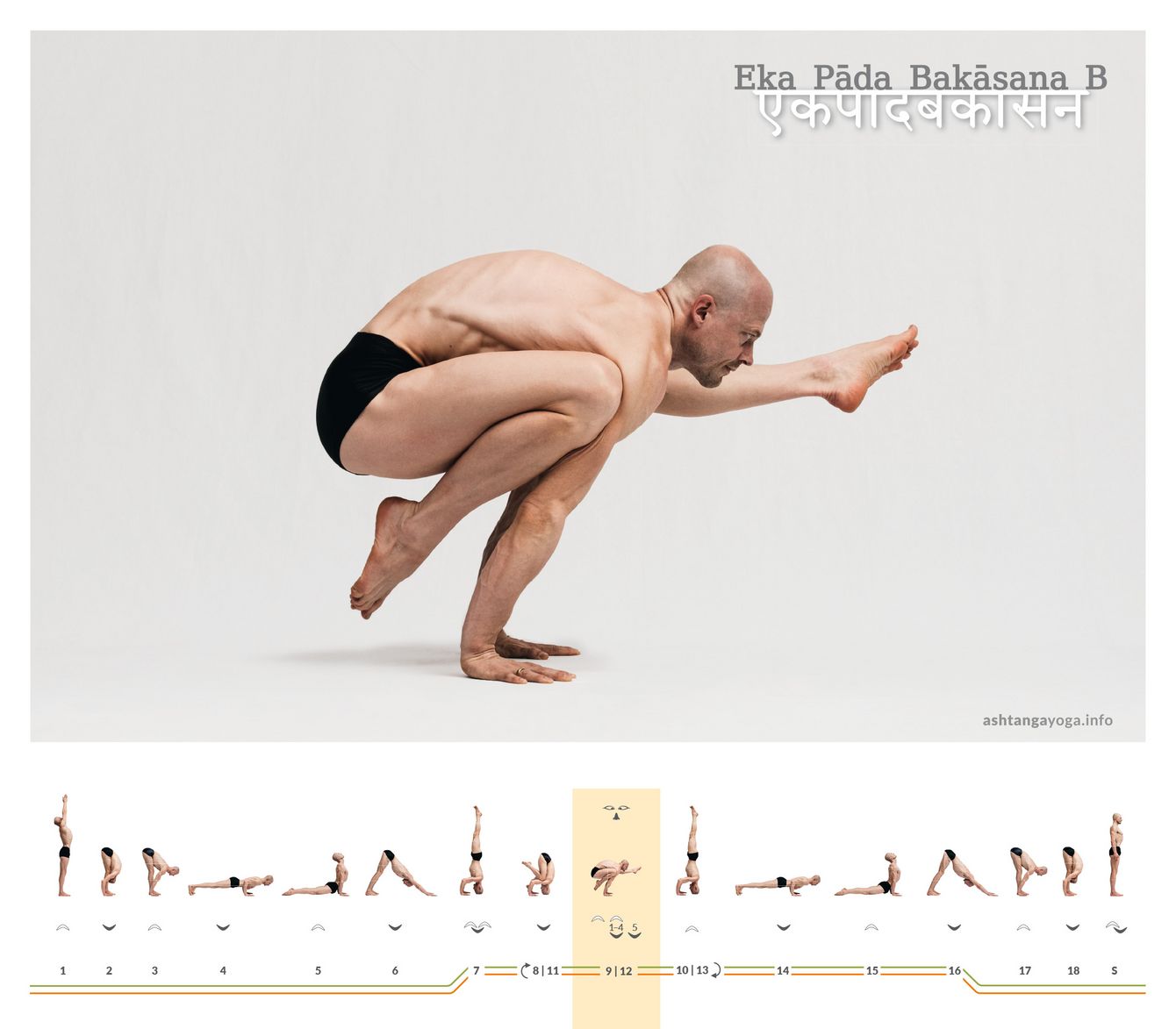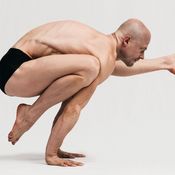

Mythology: The crane, Baka, is often associated with vigilance and attentiveness in Hinduism. Ancient texts describe cranes as standing on one leg while keeping the other leg raised, always watchful for signs of danger.
Eka Pada Bakasana B, often referred to as the "One-Legged Crane Pose," beautifully mirrors the symbolism of the crane. Just as the crane stands on one leg in a state of vigilant attentiveness, the practitioner balances on one leg and extends the other forward in this yoga posture. This represents not only physical strength but also mental concentration and alignment with one's vision - the pursuit from what is to what can evolve. From reality to possibilities.
In the traditional count: Begin directly from "Downward-Facing Dog" pose in the previous sequence.
Vinyāsa 7 - Inhale, Exhale, Inhale:
Inhale, jump out of the "Downward-Facing Dog" position into an arm balance. Exhale, bend your elbows while extending your legs. Gently place your skull in front of your hands on the ground, so that the three points of contact form an equilateral triangle. Head, shoulder girdle, pelvis, and feet should now be approximately aligned vertically. Inhale here.
Vinyāsa 8 - Exhale:
Lower your right leg on the exhalation and place the right knee on the right upper arm near the armpit. Extend your left leg over your left upper arm.
Vinyāsa 9 - Inhale, 5 breaths, Exhale:
Inhale to extend your arms and thus lift your head off the floor. The pressure with your knee against your armpit stabilizes the pose. Stay here until the fifth exhalation.
Tip: The more you pull your bent leg to your chest, the easier it is to extend your upper body diagonally upwards.
Vinyāsa 10 – Inhale:
Lower your head back to the floor at the end of the exhalation and inhale as you extend your legs vertically back into the tripod headstand.
Vinyāsa 11-13:
Repeat the sequence of movements from Vinyasa 8-10 on the left side.
Tip: Don't just fall out of the tripod headstand into Caturāṅga Daṇḍāsana. First, lower your straight legs until your toes almost touch the ground. From there, give an upward impulse with your legs. This will effortlessly lift your head so you can control your descent into Caturāṅga Daṇḍāsana.
Vinyāsa 14 to 16:
Follow the movement flow you are already familiar with until you come to a halt in "Downward-Facing Dog."
In the traditional count: Proceed directly into the movement flow of the next posture.
Effect: "Eka Pāda Bakāsana B, or the one-legged crane pose, offers several benefits. It strengthens the arms, wrists, and abdominal muscles, enhancing physical balance and core stability. This pose also improves focus and concentration, as it requires maintaining a steady position while balancing on the arms. Additionally, practicing "Eka Pāda Bakāsana B can boost confidence and mental resilience, as it challenges both the body and mind. It's a great pose for experienced yoga practitioners looking to deepen their practice and explore more advanced asanas. However, it should be approached with caution and preferably under expert guidance, especially for beginners.
Fotograf: Richard Pilnick - www.richardpilnick.com


 Dr. Ronald Steiner
Dr. Ronald Steiner
Messages and ratings